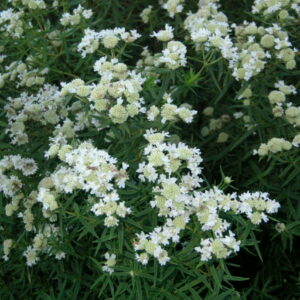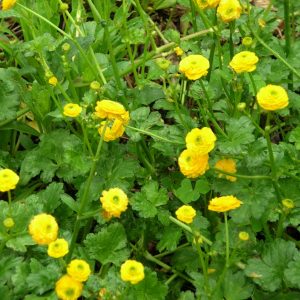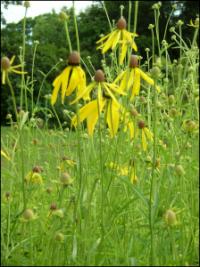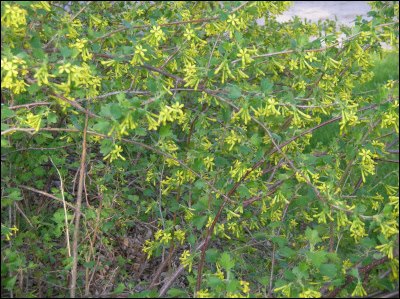Shop
Showing 609–616 of 788 results
-
Pycanthemum muticum Clustered Mountain Mint, Blunt Mountain Mint Z 4-8
Silvery bracts underlying silvery-pink pincushion flowers blooming from June to September. Flowers and leaves emit a minty fragrance.
Silvery bracts underlying silvery-pink pincushion flowers blooming from June to September. Flowers and leaves emit a minty fragrance.
Size: 12-36” x 12-36” spreading.
Care: sun to part shade in moist to well-drained soil, drought tolerant
Native: Maine to Michigan, south and angling southwest from Wisconsin to Texas
Wildlife Value: Deer resistant. One of highest nectar and pollen producing flowers, attracting copious numbers and kinds of bees, butterflies, wasps, and other insects.
Awards: Georgia Native Plant Society Plant of the Year 2022, Perennial Plant Society of the Year.Collected and described by French botanist André Michaux (1746-1802) who spent 11 years exploring the North America for plants. c. 1795.
-
Pycanthemum virginianum Mountain mint Z 4-8
Corymbs of numerous pinkish-white blossoms, leaves fragrant.
Corymbs of numerous pinkish-white blossoms in August, leaves fragrant.
Size: 3' x 18"
Care: full sun to part shade in moist well-drained to well-drained soil
Native: Wisconsin native, Eastern U.S.
Wildlife Value: attracts butterflies, supports over 50 bee species.Named by Linnaeus in 1753. Pycanthemum is Greek meaning “dense blossom.” Chippewa used it to stop menstrual flow, cure chills and fever and to season meat. The plant gave the Meskwaki energy and lured minks into their traps. Lakota Sioux: “The leaves make a very pleasant tea. An infusion of the plant is taken for coughs.” Grown at America’s 1st botanic garden, Elgin Botanic Garden 1811
-
Ranunculus acris Meadow buttercup Z 4-8 POISON
Scads of cheerful cup-shaped, butter-colored blooms atop wiry stems in late spring to early to mid- summer. Flowers taller than the deeply divided foliage into 3-5 hand-shaped lobes, each of which it divided again into more lobes with sharp-shaped tips with tooth-like edges all with prominent veins. Excellent cut flower
Scads of cheerful cup-shaped, butter-colored blooms atop wiry stems in late spring to early to mid- summer. Flowers taller than the deeply divided foliage into 3-5 hand-shaped lobes, each of which it divided again into more lobes with sharp-shaped tips with tooth-like edges all with prominent veins. Excellent cut flower
Size: 18-24” x 12” slowly spreading
Care: Sun to part sun in moist soil
Native: Europe
Wildlife Value: deer resistant, attracts butterflies and bees.Ranunculus is Latin for little frog, so named by Roman Pliny referring to the wet conditions required by some ranunculus. Named by English naturalist John Ray in Historia plantarum, published between 1686 and 1704, in which he classified 18,000 plant species.
-
Ranunculus acris ‘Flora-pleno’ Meadow buttercup Z 4-8 POISON
Scads of cheerful yellow balls made from many petals, bloom in early spring. Excellent cut flower
ARCHIVED
Note: This is a plant not currently for sale. This is an archive page preserved for informational use.
Scads of cheerful yellow balls made from many petals, bloom in early spring. Excellent cut flower
Size: 18-24” x 12” slowly spreading
Care: Sun to part sun in moist soil
Native: Europe
Wildlife Value: deer resistant, attract butterflies
Awards: Royal Horticultural Society Award of Garden MeritRanunculus is Latin for little frog, so named by Roman Pliny referring to the wet conditions required by some ranunculus. William Robinson considered this “pretty.” The English Flower Garden 1899.
-
Ranunculus repens var. pleniflorus Creeping buttercup Z 3-9
Small bright yellow nearly ball-shaped flowers blooming in May - June on this short groundcover.
Small bright yellow nearly ball-shaped flowers blooming in May – June on this short groundcover.
LIMITED QUANTITES AVAILABLE, LIMIT OF 1 PER CUSTOMER PLEASE
Size: 10" x spreading
Care: part sun to shade in moist soil
Native: Europe, Siberia, from Newfoundland to VirginiaRanunculus is Latin for little frog, so named by Roman naturalist Pliny (23-79) referring to the wet conditions required by some ranunculus. In 1629 John Parkinson (1567-1650) apothecary to James I and royal botanist to Charles I, called this Ranunculus protensis flore multiplici. The root was supposed to break persistent sores by “drawing the venome to the place.” Jefferson planted Creeping buttercup at Monticello in 1782; it may or may not have been this double.
-
Ratibida pinnata Prairie coneflower Z 3-8
Skirt of drooping, sunny, thin petals surround erect brown cone on this fragrant flower, smelling of anise, June-August.
Skirt of drooping, sunny, thin petals surround erect brown cone on this fragrant flower, smelling of anise, June-August.
Size: 4' x 18"
Care: sun to part shade in any soil
Native: Ontario, VT to FL, SD to OK, Wisconsin native
Wildlife Value: Butterfly plant. Birds eat seeds.Pinnata means feathery in Latin referring to the thin petals of the flower. Native Americans cured toothaches with the root & made tea from the cone and leaves. Collected by French plant hunter André Michaux (1746-1802) on the prairies of Illinois in 1795.
-
Rheum palmatum var. tanguticum Ornamental rhubarb Z 4-8
Gigantic, jagged-edge, bronze-tinted turning green foliage with pink plumes reaching skyward atop tall stalks in early summer.
OUT OF STOCK
Gigantic, jagged-edge, bronze-tinted turning green foliage with pink plumes reaching skyward atop tall stalks in early summer.
Size: 8' x 6'
Care: Sun to part shade, moist well-drained fertile soil, mulch in spring
Native: valleys of Gansu, Qinghai, Shaanxi, Xizang, ChinaRhubarb carried from its native China to central Asia and then Europe by caravans more than 2000 years ago. Both Greek physician Dioscoride (40-90) s and Roman Pliny (23-79) mentioned the plant during the 1st century. In 1300’s Marco Polo explained that merchants of China do not take their beasts of burden into the mountains where rhubarb grows because “if eaten (causes) the hoofs of the animal to drop off.” This variety 1st described in 1874.
-
Ribes aureum syn. Ribes odoratum Clove currant Z 3-8
Early to mid-spring yellow flowers shaped like a tube with 5 petals opening wide at the ends smother the shrub giving off a sweet, clove-scented fragrance – heavenly. Ships only in spring.
Early to mid-spring yellow flowers shaped like a tube with 5 petals opening wide at the ends smother the shrub giving off a sweet, clove-scented fragrance – heavenly. Ships only in spring.
Size: 6' x 6' spreading
Care: Sun in moist well-drained to well-drained soil.
Native: west-central US
Wildlife Value: Attracts bees, butterflies and hummingbirds for nectar. Small mammals eat the berries. Immune to Walnut toxinsMany tribes ate the berries. Shoshone and Paiute used the shrub’s inner bark to heal sores and swellings. Meriwether Lewis on the Lewis & Clark Expedition found this in 2 locations – “near the narrows of the Columbia” April 16 1806, now Klickitat County Washington, and on July 29, 1805 in Montana.
**LISTED AS OUT OF STOCK BECAUSE WE DO NOT SHIP THIS ITEM. IT IS AVAILABLE FOR PURCHASE AT OUR RETAIL LOCATION.







